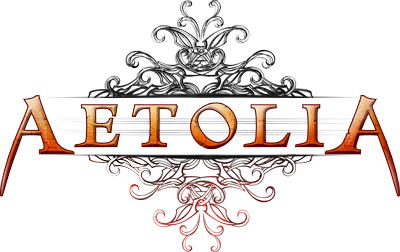22.2.4 Forging General Guidelines
Overview
--------
Forging is a skill markedly different from most types of crafting. Weapons and armor are for use in combat. Our goal with Aetolian PvP is transparency: information is easily accessible, and highly readable.
Because of this, there are certain restrictions that come with weapons and armor. The goal is to be as flexible as possible, while still enforcing a certain standard of fantasy realism. In this file you will see a lot of words like "should be" and "usually" - crafting is never a perfect science, and someone may find an unpredicted exception or variation on something that actually works. If you have an issue with the validity of a design, you should message Becue, or a God if you cannot get ahold of Becue within a reasonable timeframe.
Weaponry
--------
Weaponry comes in a very wide variety, but all weapons are crafted with one primary purpose: to harm another person. Whether an intimidation piece or a trusty sidearm, it is integral that weapons are made well enough to suit their purpose, without compromising the safety of a skilled user.
Materials: Weapons cannot be made primarily from soft materials, such as leather or tin. Malleable and brittle materials like gold and obsidian are also unsuitable for a weapon design, though they can be worked in for aesthetic detail. The exception to this rule is skysilver, which is flexible but very strong. On the other hand, bows must be able to bend, and usually can't be made of anything but wood.
Viability: The weapon must be able to perform its intended use, to some extent. A sword does not have to be able to pierce flesh (in the instance of, say, an 'unworked slab sword' or what have you), but you must be able to use it by swinging or jabbing, and it must be feasible to envenom the weapon (to lay a venom across its edge). A flail always involves a chain component and a minimum of three heads. A hammer is not a hammer without a thick and powerful head. So on and so forth, the weapon cannot deviate too far from its proper origin.
Armor
-----
These are our policies for armor. These apply not only to the suits of armor themselves, but miscellaneous armor pieces, such as pauldrons or helmets.
Coverage: All armor, of any type, must cover two thirds of the body's vital organs to be approved. Generally, this means adequate torso coverage. Battle-damaged or improvised armor designs are allowed, within reason. A chainmail bikini cannot be justified, for example, by saying "it was once a full suit of armor". If its primary feature is making the wearer attractive, it's probably not good armor.
Viability: The materials used in armor must be reasonably durable and protective, dependent on the grade of armor being produced. As with weapons, we do not allow purely ornamental designs for forged armor. This means that, in general, soft, malleable, or brittle materials (gold, silver, etc.) cannot be used for the bulk of metal armor. Although these metals may be added, they must not form the chiefly protective portion of the piece.
Rules for specific types of armor
---------------------------------
These are the standards for each armor type in the game. Variants allow for certain exceptions to the rules, and are provided to allow for flexibility.
Leather
-------
Leather armor can range from soft leathers to hardened leathers that are studded with metal of some kind. Bone and wood can also be used to augment the armor, however the bulk of the armor must be some persuasion of leather.
Variants
--------
Padded: Made with very thick, durable cloth. This and the aketon are the only
forms of armor that may be made with cloth.
Aketon: Like padded, above, except that an aketon is a padded jacket (see:
gambeson).
Harness: A style of armor that uses sturdy straps to protect the key areas.
The most minimal form of armor - that doesn't mean it can be used as
lingerie!
Lamellar: In Aetolia, this is armor made up of rows of small leather or wood
plates. If using wood, it must be very lightweight.
General Types: leather armour, rawhide armour, lamellar armour, cuirbouilli, harnesses, padded armour, aketons
Ring
----
Typical ringed armor consists of an inner lining, such as cloth or thick leather, into which are sewn rings or discs of harder meterial. Bone, hardwoods, and metal are acceptable for use in ringmail.
Variants
--------
Jazerant: Specifically, a mail coat. The Aetolian interpretation of the
jazerant is a ringmail coat or shirt.
General Types: ringmail, ring armour, disc armour, jazerant
Scale
-----
Scale armor is made by linking together sturdy, overlapping scales. It is recommended to use a softer underlining for comfort, but not required. A wide variety of materials can be used for scalemail, similarly to ring armor: bone, wood, metal, and more.
Variants
--------
Hauberk: Specifically, a mailed shirt, long enough to cover the arms and
thighs. A haubergeon is a smaller version of this.
Laminar: Made of strips or bands of material. Unlike splintmail, these strips
are not thick or especially durable, providing protection instead by
layering. It is more acceptable to use bone or wood in laminar
armor.
General Types: scalemail, scale armour, hauberks, haubergeons, laminar armour
Chain
-----
Chainmail is a suit of chain-link metal, backed either by a softer inner lining, or designed to be worn over the clothing. Any armor-grade metal that can be formed into chain is acceptable for use - copper, bronze, iron, and more. This must comprise the bulk of the armor, though other materials can be used for ornamentation or additional protection.
Variants
--------
Byrnie: The chainmail answer to the hauberk. Obviously, made with chain
instead of scales.
General Types: chainmail, chain armour, byrnie
Splint
------
Splintmail is made up of splints - literally slats or strips of hard material, which may overlap or lie adjacent to one another. Generally, metals should be used for splintmail - iron, steel, or bronze being ideal - but very thick copper or wood is suitable, as well. Softer metals, bone, or thin wood will not work.
Variants
--------
Cuirass: Splintmail that chiefly covers the chest, from neck to groin.
General Types: splintmail, splint armour, cuirasses
Fieldplate
----------
The defining feature of fieldplate is armor materials which are shaped, sculpted, or fitted together to form large, discrete plates, which may or may not overlap. Fieldplate is less covering than fullplate, and not nearly as heavy - it is meant to compromise between protection and mobility. With any type of plate armor, metal is practically required. The only exception would be exceptional or rare materials, such as ogre/dragon bone, or shieldbark wood; and even then, only if the plates are thick.
Variants
--------
Brigandine: Similar to the armor styles above, this is plated armor in which
the plates are riveted to a layer of cloth or leather. It is more
acceptable to use non-metal materials in brigandine armor, though
it must provide high coverage, and the material must be strong.
Breastplate: A full breastplate, usually with pauldrons or tassets to provide
additional coverage. Given how much less this covers than a
standard suit of fieldplate, it should be exceptionally strong.
General Types: fieldplate, platemail, brigandines, breastplates
Fullplate
---------
Fullplate is the most protective armor, and by definition, covers as much of the body as possible, to ward attacks from any direction. The components of fullplate will provide with integrated gauntlets, tassets, and more. This armor is very heavy and very sturdy, and only the strongest materials are acceptable for use. See fieldplate for an example of acceptable materials.
When in doubt, ask Becue.
General Types: fullplate, plate armour
